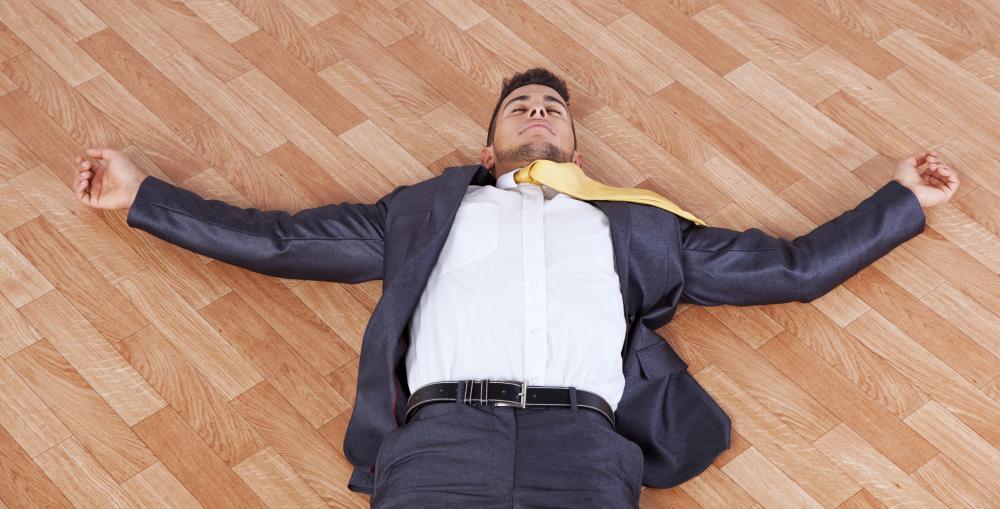At WiseGEEK, we're committed to delivering accurate, trustworthy information. Our expert-authored content is rigorously fact-checked and sourced from credible authorities. Discover how we uphold the highest standards in providing you with reliable knowledge.
What are the Signs of Oncoming Syncope?
There are three main types of syncope, or fainting: vasovagal, carotid sinus, and situational. Syncope may occur when the brain does not receive enough blood, which is usually due to a drop in heart rate, followed by a dip in blood pressure. A person may experience lightheadedness or paleness before a syncopal episode. He or she may develop a cold and clammy sweat, become very warm, or experience blackening or whitening of the visual field. If fainting happens frequently and interferes with a person's quality of life, a doctor may prescribe medication, perform surgery, or recommend certain other therapies to stop blood from pooling in the legs.
Vasovagal syncope is the most common type of fainting. It may occur in response to a triggering event such as seeing blood, sudden pain, or an extreme emotion. During the triggering event, the nervous system slows the heart rate, leg veins dilate, and blood pools in the legs. This causes blood pressure to decrease, which limits blood flow and oxygen to the brain. Fainting is the result.

Carotid sinus syncope and situational syncope happen much less frequently than the vasovagal type. Fainting may result when a person turns his or her head, thereby cutting blood flow through the carotid artery; a tight collar may have the same effect. Sometimes stimulation of the gastrointestinal tract leads to passing out. A person may also faint when coughing or going to the bathroom.
Signs of syncope can include a sudden feeling of lightheadedness. Some people may feel dizzy. Others may notice that the blood has drained out of the pre-syncopal person's face and that his or her skin has become very pale.

A person about to pass out may notice that he or she breaks out in a cold, clammy sweat. The opposite may occur prior to losing consciousness and the person may suddenly become very warm. Sometimes before fainting, a person's visual field may become completely black or all white so that he or she cannot see anything.
In some cases, syncope may interfere with daily life. In these cases, a doctor may prescribe a beta-blocker, an antidepressant, or an asthma or low-blood pressure drug that constricts blood vessels. Some patients with severe syncope may have a pacemaker inserted.

To stop blood from pooling in the legs, the doctor may recommend certain therapies. These techniques may include learning to identify triggers and then tensing hand muscles into a fist. Crossing the legs and tensing the thigh muscles may also prevent fainting. The doctor may also recommend foot exercises, increasing salt intake, or wearing elastic stockings as other ways to decrease the chance of fainting.
AS FEATURED ON:
AS FEATURED ON:

















Discuss this Article
Post your comments